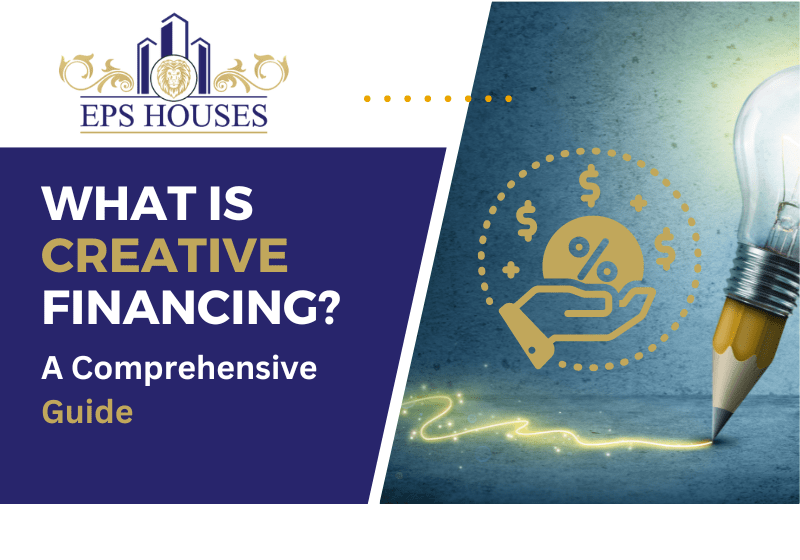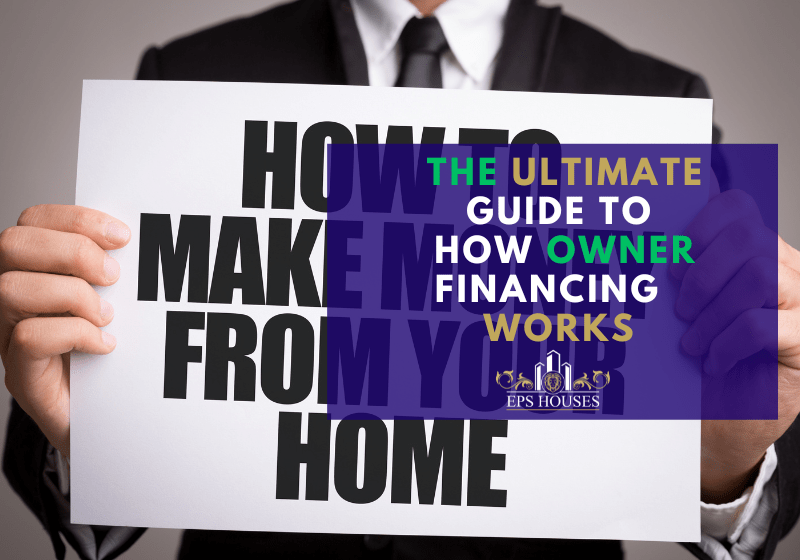A Comprehensive Guide
Creative financing is an umbrella term that refers to non-traditional or unconventional ways of financing a purchase. Unlike traditional financing options like bank loans, credit unions, or mortgages, creative financing methods are much more flexible and tailored to meet the unique needs of both buyer and the seller.
The primary objective of creative financing is to provide solutions that overcome the limitations of traditional financing options. It allows parties involved in a transaction, such as a real estate deal, to explore alternative financing options when typical avenues are not accessible or suitable. This article will dive deep into understanding creative financing, its benefits, how it works, and the strategies involved.
What Is Creative Financing?
Creative financing methods are found in various industries, including but not limited to business sales, real estate, automobile, and other retail sectors. These methods facilitate transactions when traditional lenders like banks and other financial institutions cannot offer suitable terms, or borrowers can’t meet these institutions’ strict lending requirements.
The essence of creative financing lies in providing a win-win solution for everyone involved in a transaction. Sellers can sell their assets quicker without having to lower their prices significantly. At the same time, buyers, who otherwise might not have qualified for traditional loans, can only purchase assets by providing substantial down payments or stellar credit ratings.
Benefits of Creative Financing
Creative financing offers a multitude of benefits over traditional financing methods. Some of them are as follows:
- Flexibility: Creative financing offers flexibility to all parties involved in a transaction. The terms and conditions can be tailor-made to suit the unique requirements of both buyers and sellers.
- Speed: Transactions carried out via creative financing methods are generally faster than traditional ones, as they don’t involve time-consuming procedures like getting approval from a bank or mortgage company.
- Increased Opportunities: Creative financing increases opportunities for buyers with less-than-perfect credit histories or low incomes. It allows them to purchase assets without meeting traditional financial institutions’ strict lending criteria.
How Does Creative Financing Work?
Creative financing strategies vary from industry to industry. However, some of the most common methods in real estate include seller financing, lease options, hard money loans, and private money loans.
Seller Financing:
In this method, the buyer is not getting a loan from a bank; the seller extends credit like a bank to the buyer for the property purchase. The buyer pays the seller regularly until the loan term is complete.
Lease Options:
This involves the potential buyer leasing the property and securing an option to buy it later. A portion of the monthly rent can go towards the down payment if the lease decides to buy the property eventually.
Hard Money Loans:
These are short-term loans from private investors or companies. Loans are backed by the property’s value, not the buyer’s credit rating.
Private Money Loans:
These are similar to hard money loans but by an individual or a group rather than a company.
Creative Financing Strategies
Creative financing strategies can be as varied and unique as the people who use them. These strategies can be employed individually or in combination, depending on the circumstances of the transaction. Some of the popular methods include:
- Wraparound Mortgage: This is a form of seller financing where the seller maintains their original mortgage, and the buyer pays the seller a higher interest rate than the seller pays their actual lender.
- Subject-To Investing: In this strategy, a buyer purchases a property subject to the existing mortgage staying in the seller’s name, but the buyer owns the property and makes the mortgage payments.
- Equity Sharing: In this arrangement, a buyer and seller (or another investor) jointly purchase a property. The buyer lives in the property and pays the mortgage and expenses, while the other party contributes the down payment. After an agreed period, the property is sold, and the profits are split.
Creative Financing Examples
-
Seller Financing (Owner Financing)
Seller financing, seller carry back, or owner financing is when the potential property seller serves in a role similar to a bank. They finance the transaction instead of the buyer securing a loan through a traditional lender.
In practice, John wants to sell his property valued at $250,000. Due to her credit history, Sarah wants to buy it but needs help securing a mortgage loan. John offers to finance the transaction, allowing Sarah to pay the purchase price directly to him over time at an agreed interest rate. Therefore, Sarah pays John in monthly installments, just as she would to a bank.
-
Lease Options
Lease options allow the potential buyer to close the sale of said property at some time in the future. It comprises two agreements: a standard lease agreement and an opportunity to buy.
For instance, consider a property owner, Mark, who leases his home to Lisa. They agree that Lisa can buy the house at an agreed-upon price during the lease term (usually 1-3 years). A portion of Lisa’s monthly rent during this period goes towards the future down payment should she opt to buy. If Lisa decides not to buy, Mark keeps the money.
-
Hard Money Loans
Hard money financing is used in real estate transactions where the buyer can’t qualify for a traditional mortgage. They are short-term loans issued by private investors or companies, with the loan amount based on the value of the property being purchased.
For example, Laura wants to buy a fixer-upper property worth $100,000 and needs funds quickly. She secures a hard loan from a private lender, who lends her the money at a high-interest rate, with the property as collateral. Laura can buy, renovate, and sell the property at a profit, repaying the hard money loan swiftly.
-
Equity Sharing
In an equity-sharing agreement, two parties jointly purchase a property. One party lives in the property and pays the expenses, while the other contributes the down payment and benefits from a share in the appreciation.
For example, suppose Alex wants to buy a home but cannot afford the down payment. His friend Ben agrees to contribute the down payment. They form an equity sharing agreement where Alex lives in the home, pays the mortgage, and after a predetermined period (say, ten years), they sell the house and split the profits.
-
Wraparound Mortgage
A wraparound mortgage; is a type of seller carryback financing where the seller keeps their original mortgage, and the buyer pays an agreed amount to the seller, typically more than the seller’s existing mortgage payment.
For instance, Jane wants to sell her home but still owes $100,000 on her mortgage. She sells the home to Mike for $200,000 using a wraparound mortgage. Jane’s existing mortgage stays in place, while Mike gives Jane a down payment and agrees to pay her a set amount each month, which Jane uses to pay her existing mortgage, pocketing the difference.
Conclusion: Leveraging Creative Financing with EPS Houses LLC
As we’ve seen, creative financing provides numerous opportunities for buyers and sellers, unlocking potential in transactions that may not fit the mold of traditional funding.
The flexibility, adaptability, and potential accessibility of creative financing offer a broader range of options to buy or sell a property.
In particular, working with an experienced buyer like EPS Houses LLC can elevate the benefits of creative financing even further. Here’s why:
- Experience and Knowledge: EPS Houses LLC has many years of expertise in the business sale, residential, and commercial real estate market, including deep knowledge of creative financing strategies. This means they are well-equipped to navigate the complexities of non-traditional financing options and to tailor these approaches to specific situations. Their seasoned understanding ensures that all aspects of the deal are conducted legally and ethically, providing peace of mind to sellers.
- Flexibility: EPS Houses LLC understands that each seller and property has unique circumstances and needs. Their flexibility allows them to work closely with sellers to determine the best creative financing approach that suits the seller’s financial situation, providing a personalized solution instead of a one-size-fits-all plan.
- Efficiency: EPS Houses LLC can expedite real estate transactions with its extensive knowledge and streamlined processes. This efficiency is invaluable for sellers looking to sell their property promptly without unnecessary delays typically associated with traditional financing methods.
- Access to Funds: As an established real estate company, EPS Houses LLC has immediate access to funds. This is crucial in hard money loans, wraparound mortgages, and other creative financing strategies that require ready capital, assuring sellers that the agreed-upon financial obligations will be fulfilled.
- Partnership Approach: EPS Houses LLC works with sellers as a buyer and partner. They are dedicated to creating win-win scenarios, building relationships based on trust and mutual benefit.
In conclusion, partnering with a buyer like EPS Houses LLC offers distinct advantages if you’re considering creative financing for your property. Their experience, flexibility, efficiency, financial readiness, and commitment to a partnership will make the process smoother and potentially more profitable and beneficial for you as a seller. Remember that, as always, you must seek legal and financial advisors to ensure you understand all aspects of the transaction. Want to explore your option’s with EPS Houses Please fill out our seller property form.



